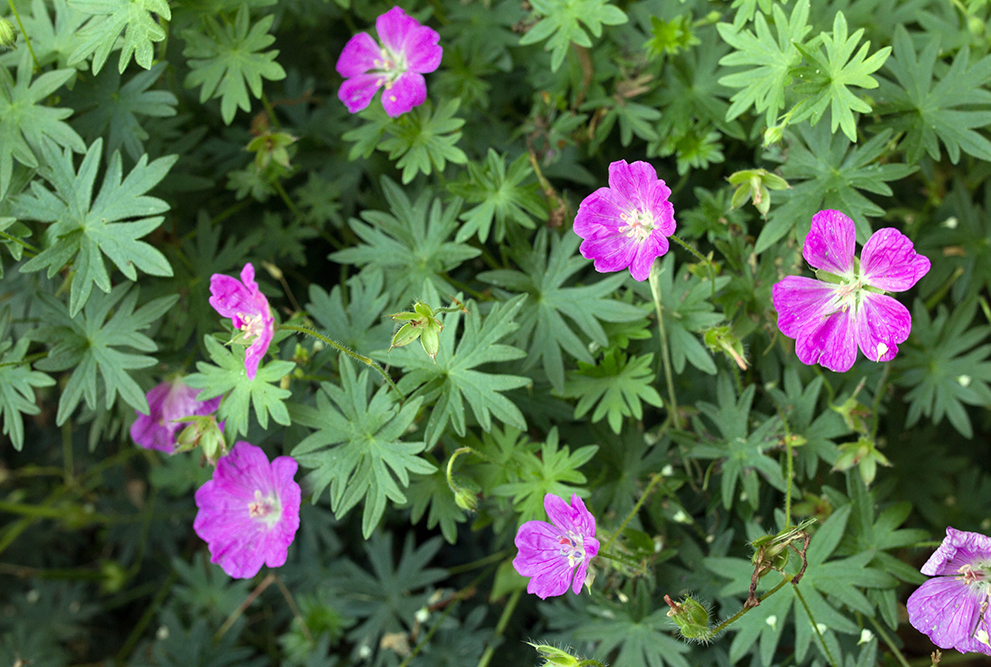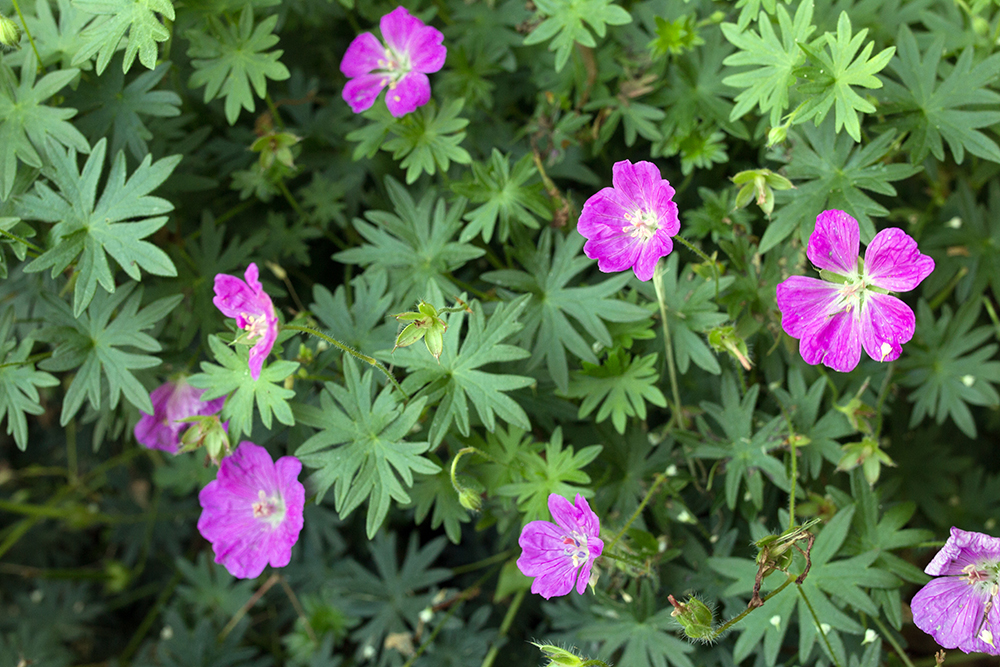Geranium sanguineum
Cranesbill-BloodyGeranium sanguineum
Cranesbill-BloodyAn excellent species for mass plantings; encourage customers to buy multiple plants to fill sunny spaces. Bright magenta flowers pop early in the season above the taller, more upright mound of distinctly dissected, bright green foliage that turns crimson red in fall. A great low maintenance, hardy perennial.
Plant Details
- Zone: 3 - 9
- Height: 12-18"
- Spread: 18-24"
- Exposure: Full Sun, Part Shade
- Soil Moisture: Low Water Needs, Moderate Water Needs
- Drought tolerant: No
- Bloom time: Early Summer, Late Spring
- Foliage Color: Green Shades
- Flower Color: Pink Shades
- Fragrant: No
- Good Cut Flower: No
- Native: Not native to North America
- Deer resistant: Yes
- Rabbit resistant: Yes
- Bee-friendly: Yes
- Attracts butterflies: Yes
- Attracts hummingbirds: No
- Groundcover: No
- Roy Diblik Favorite: No
Plant Details
- Zone: 3 - 9
- Height: 12-18"
- Spread: 18-24"
- Exposure: Full Sun, Part Shade
- Soil Moisture: Low Water Needs, Moderate Water Needs
- Drought tolerant: No
- Bloom time: Early Summer, Late Spring
- Foliage Color: Green Shades
- Flower Color: Pink Shades
- Fragrant: No
- Good Cut Flower: No
- Native: Not native to North America
- Bee-friendly: Yes
- Deer resistant: Yes
- Rabbit resistant: Yes
- Attracts butterflies: Yes
- Attracts hummingbirds: No
- Groundcover: No
- Roy Diblik Favorite: No
Grower Information
For the best spring flowering display at retail, plant Geranium plugs in late summer. For later season sales, plant our vernalized plugs in spring or summer. Hardier varieties can be grown outdoors and easily overwintered in cold frames. Keep plants cool in late winter to avoid premature flowering.
- PowerPlug Size(s): 32s
- Optimal Planting Time: Late Summer-Fall
- Retail Sales Window: Fall, Spring, Summer
- Moisture in Production: Average
- Requires Shade in Production: Yes
- Vernalization Required for Bloom: No
- Vernalization Beneficial: Yes


